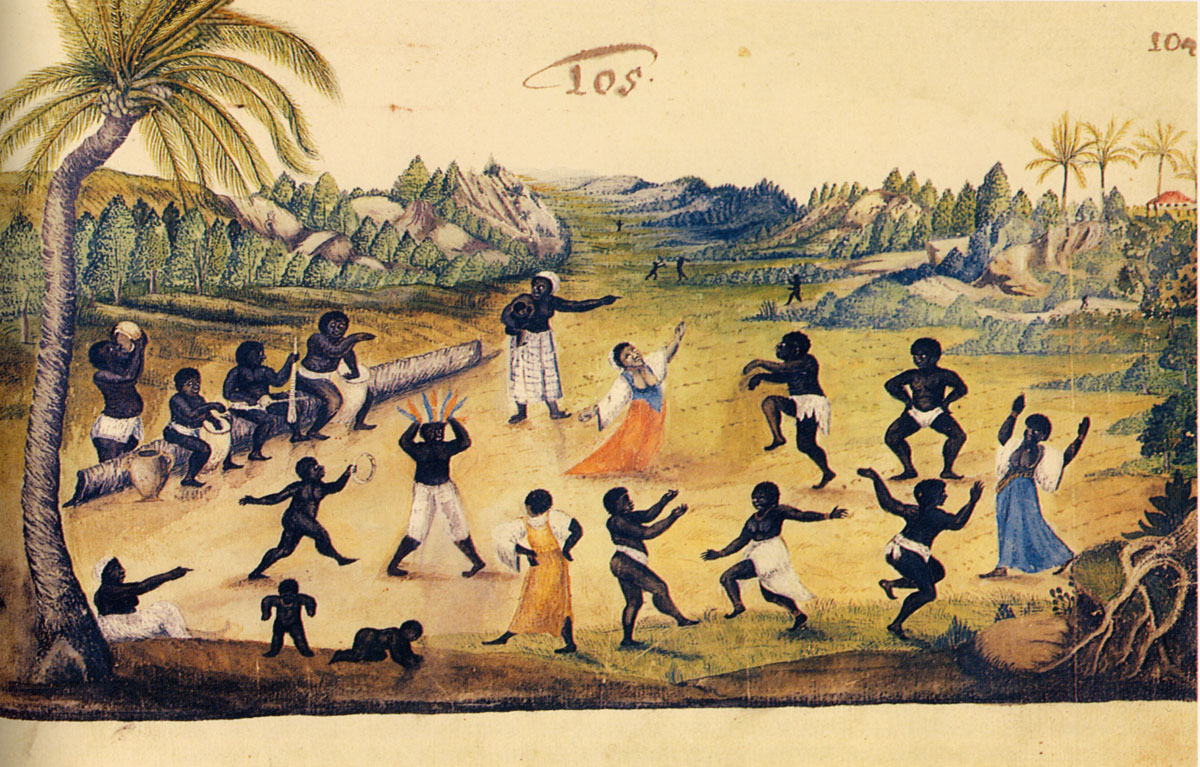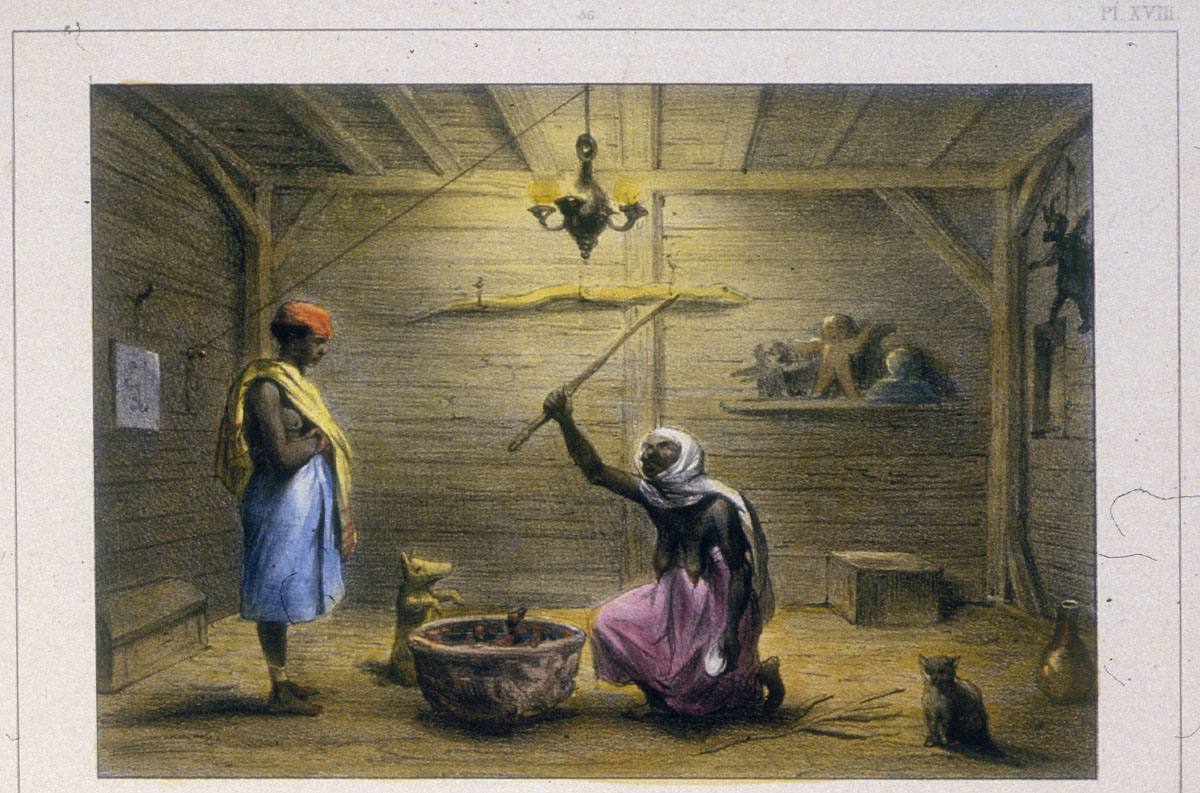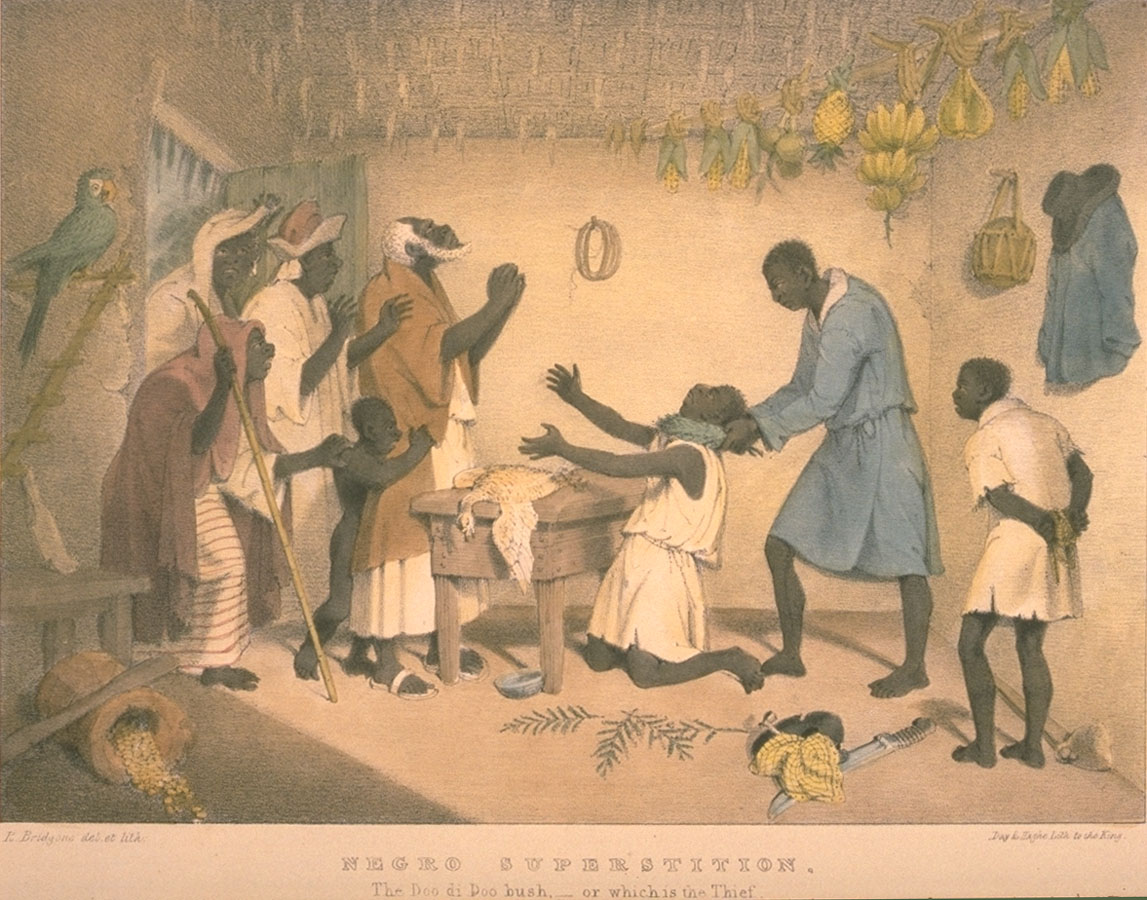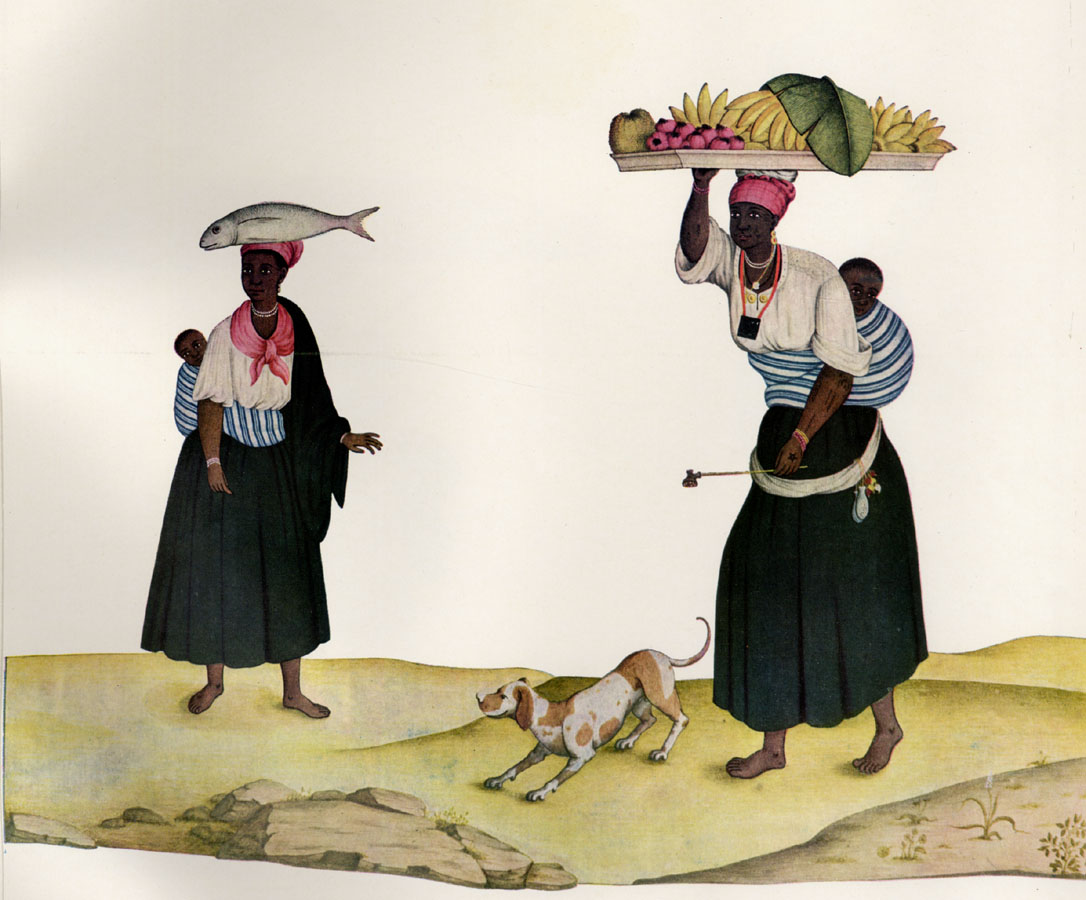Práticas tradicionais de caráter religioso
1.

Cerimônia e dança no Brasil, ca. 1630.
Fonte: Cristina Ferrão &
José Paulo Monteiro Soares. (Editores). Brasil holandês (vol. II). O
"Thierbuch" e a "Autobiografia" de Zacharias Wagener. Rio
de Janeiro,
Editora Index, 1997, p. 193, prancha 105. Comentário: Homens,
mulheres
e crianças dançando. Grupo com vários instrumentos
musiciais,
incluindo tambores e outros instrumentos africanos. O
comentário do
próprio Wagener (p. 194) vale a pena ser transcrito: 'Quando os
escravos têm executado por semanas inteiras sua penosa tarefa,
lhes é
permitido festejar o domingo como desejam; estes, em grande
número, em
certos lugares e com toda sorte de curvos saltos, tambores e
pífaros,
dançam de manhã até a noite, todos de forma
desordenada entre si,
homens e mulheres, jovens e velhos; enquanto isso, os restantes bebem
uma bebida forte e preparada com açúcar, a que chamam
garapa; consomem
assim o dia santo santo em um perpétuo dançar, ao ponto
de muitas vezes
não se reconhecerem, tão surdos e imundos que ficam'.
2.

curandeira, Paramaribo, Surinam, 1839
Fonte: Pierre Jacques Benoit, Voyage a Surinam . . . cent dessins pris sur nature par l'auteur (Bruxelles, 1839), plate xvii, fig.36. Comentário: A healer trying to cure a client of some illness, using her spiritual powers. These healers, "who the Negroes view as oracles," are usually older black women and are called Mama Snekie (or Water Mama, Mama of Snakes). The author observed one of these women at work, and describes at length the scene he witnessed and illustrated in this drawing (p. 26).
3.

Procedimentos para verificar um
ladrão, Trinidad, ca. 1830s
Fonte:
Richard Bridgens, West India Scenery...from sketches taken
during a voyage to, and residence of seven years in ... Trinidad
(London, 1836), plate 21. Comentário: Caption,
"Negro superstition, the Doo di Doo bush, or which is the thief." "This
is a kind of ordeal . . . among the Negroes, for extorting a confession
of guilt from persons suspected of theft or other crime .. . . The
ceremony is conducted with much solemnity. The injured party
communicates his suspicions to the Dadie (as the reputed sorcerer is
called), who appoints a time for the trial. A refusal of the suspected
person to accept the challenge is considered an admission of guilt. . .
. The Dadie twists a band out of the branches of a common shrub, at
intervals sprinkling salt on it, and accompanying the operation with
some incantation . . . . thus formed, it is passed round the neck of
the supposed culprit, who is then called upon to clear himself by oath
of the imputed crime. The Negroes . . .. believe that if they perjure
themselves .. . the band would remain immovably twisted round the neck,
and, by gradually tightening itself, ring from the party an
acknowledgment of his guilt . . . . the sketch here given was taken
from a scene which passed under the eye of the author" (Bridgens).4.
Feiticeiro Negro, Rio de Janeiro, ca.
1830.
Fonte: Jean Baptiste Debret.
'Feiticeiro Negro', aquarela pertecente a Fundação
Biblioteca Nacional (Rio de Janeiro, Brasil). In: Nelson Aguillar
(Org.). Mostra do
redescobrimento: negro de corpo e alma. São Paulo,
Fundação Bienal de São Paulo, 2000, p. 164.
Coméntario: A imagem de Debret (1768-1848) representa um homem
negro, bem vestido, e investido de poderes mágicos. No
chão, ele descreve um círculo, talvez representando uma
figura alegórica e ritual. Muitas
vezes, como se lê em alguns artigos e capítulos de livros
aqui
propostos para discussão (particularmente naqueles escritos por
João
José Reis) alguns desses homens poderiam, graças aos seus
poderes mágicos, gozar de posições importantes
decorrentes de suas relações com pessoas situadas dentre
os grupos de letrados ou de grandes proprietários da
América portuguesa e do Brasil imperial.
5.

Vendedeiras com bolsa de mandinga, Rio de Janeiro, século XVIII.
5.

Vendedeiras com bolsa de mandinga, Rio de Janeiro, século XVIII.
Fonte: Carlos Juliao,
Riscos illuminados de figurinhos de broncos e negros dos uzos do Rio de
Janeiro e Serro do Frio (Rio de Janeiro, 1960), plate 33.
Comentário:
Showing
different clothing styles, the woman on the left carries a large fish
on her head, and her child strapped to her back. The woman on the right
is also shown with her child on her back, and is heading a wooden tray
filled with bananas and other fruit; note the long-stemmed pipe in her
hand and the amulets around her neck and hanging from the sash around
her waist. These amulets, or "bolsas de mandinga," were small pouches
"that contained powerful substances from the natural world--leaves,
hair, teeth, powders, and the like. Each bolsa had distinct powers, but
the most common ones were believed to protect the wearer from bodily
injury" (James Sweet, Recreating Africa: Culture, Kinship, and Religion
in the African Portuguese World, 1441-1770 [University of North
Carolina Press, 2003], p. 180). Born in Italy ca. 1740, Juliao joined
the Portuguese army and traveled widely in the Portuguese empire; by by
the 1760s or 1770s he was in Brazil, where he died in 1811 or 1814.